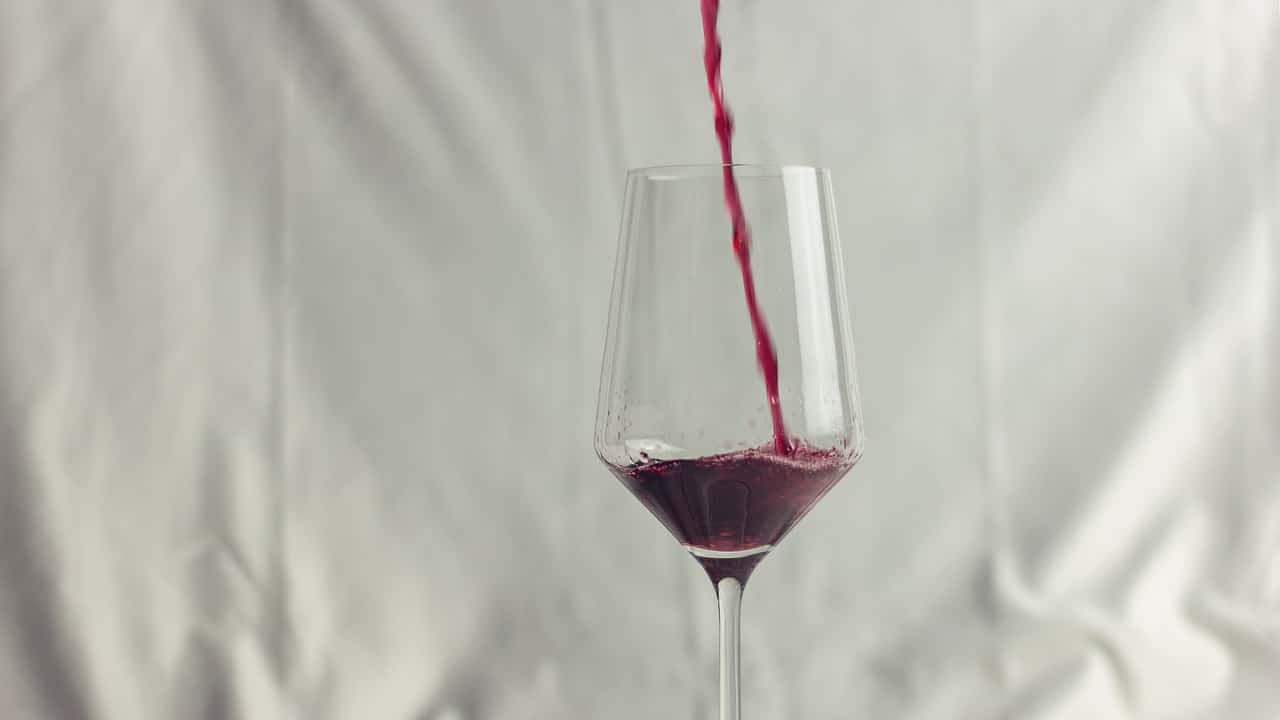You don’t have to be the wine expert to know that Merlot and Cabernet Sauvignon are some of the most popular red wine choices out there. At the first glance, these two wines might appear to be similar, but the reality is far from that. Both grape varieties originate from the same ancestor, Cabernet Franc, but they developed in different directions. In this article, we’ll share everything there is to know about each of these two red wines, as well as how they compare against each other. To find out what their differences and similarities are, keep reading.
Main Differences Between Merlot And Cabernet Sauvignon
- Merlot has a slightly fruitier taste, which also makes it sweeter than Cabernet Sauvignon.
- Cabernet Sauvignon has higher tannin content than Merlot, and for that reason, it has a slightly bolder taste.
- Merlot grapes can over-ripen way easier than Cabernet Sauvignon.
- Merlot requires less storage time, since it’s drinkable at a younger age than Cabernet Sauvignon.
- Cabernet Sauvignon leaves a heavier feeling that coats the mouth compared to Merlot.
- Cabernet Sauvignon pairs well with heavy meals like a steak, duck or other high-protein dishes. Merlot, on the other hand, is great with Italian dishes, as well as lamb and beef. Avoid pairing it with really strong aromas, like spicy peppers or bleu cheese, as these will overpower the wine flavor.
- Cabernet Sauvignon has more alcohol percentage than Merlot.
- Usually, Merlot is sold at a much lower price than Cabernet Sauvignon.
Merlot Characteristics
When it comes to these two red wines, Merlot is the dark horse. It’s affordable and delicious, so there’s no reason to not serve it at dinner parties and other important gatherings.
Merlot is a typical example of easy-drinking wine. It’s soft and juicy, with a tinge of chocolate and cherry notes. Yet, it’s not a sweet wine. Instead, you might just feel a slight tinge of sweetness, along with the deep, rich flavor.
History Of Merlot Wine
This fruity red wine originates in France, back in the 18th century. It’s first mentioned by a Bordeaux official who referred to this wine as one of the best in the area. The word Merlot was first mentioned in a wine article back in 1824. According to that article, Merlot grapes got their name after a certain type of black bird that would eat ripe grapes off the vine.
It didn’t take long for Merlot to grow in popularity. But it was generally used as a blending grape, rather than a standalone variety. It was regularly planted in the Médoc region until the dire winter of 1956, when extreme frost almost destroyed Merlot vineyards across France. As if that wasn’t enough, replanting attempts resulted in several vintages rotting during the 1960s. That’s when the French government decided to prohibit new plantings in the 1970s, in order to prevent the rot from possibly spreading to other vineyards. But as the international demand for Merlot wine grew, it was clear that the ban had to be lifted, which happened in 1975.
Merlot grapes are rather sensitive to heat, and can ripen in a matter of days in areas that are very warm. Still, it’s one of the most widely planted types of grape in the world. Merlot vineyards can be found in cool climate regions like Canada or Chile, but also warm climate places like California and Greece.
Merlot Flavor Combinations
Fruity flavors like raspberry, cherry, plum and blueberry are often found in Merlot wine. It might also show notes of olives, cedar and tobacco, and when it ages in oak barrels, it can develop earthy flavors of molasses, caramel and coffee beans.
Pairing Merlot With Food
When it comes to food pairing, Merlot is such an effortless choice. It’s great for pairing with light meats like chicken or pork, since it doesn’t overpower the taste of food. Merlot will go well with pasta and pizzas too.
But that doesn’t mean that Merlot is a bad pairing for richer meals. Roasted veggies, turkey or a chargrilled steak – all of these dishes would be complemented by sweet fruity Merlot notes. What’s more, these flavors make it a great option for dessert, too.
Merlot Wine Recommendations
With such an affordable price, this is a wine blend everyone needs to try in their life. Merlot is proof that high-quality wine doesn’t have to go hand in hand with big price tags. Here are a few good Merlot wines we recommend trying.
2014 Clos du Bois North Coast Merlot
This Californian Merlot is a good middle ground. It’s very silky with a hint of tobacco, vanilla and black cherry notes. This dark red wine is bold, dry and what’s best, very affordable.
2013 Columbia Crest Grand Estates Columbia Valley Merlot
For those who prefer a slightly stronger Merlot, this is a great choice of wine. The first thing you notice is its beautiful dark, almost purple color. It’s rich in earthy flavors like coffee, tar and dark pepper. This Merlot is dry and smooth, with an elegant chocolate finish.
2014 Raymond R Collection California Merlot
If you’re looking for a wine with perfectly balanced acidity and tannins, this is a bottle for you. Raspberry, cherry and plum flavors blend smoothly with earthy and spicy notes, hitting the mouth with a soft and smooth finish. And for the price it’s sold at, it’s quite a steal.

Cabernet Sauvignon Characteristics
Cabernet Sauvignon is the world’s most popular red wine. Basically, any major wine-producing country grows this variety of grapes. Cabernet is a small but thick-skinned grape that requires some time to smooth out the mixture. That’s why they’re usually released within a few years from vintage. It can grow in different climates, ranging from cool to warm. The main characteristics of Cabernet Sauvignon are the dark bloody color and an alcohol content level of over 13.5%. This is a dry wine, and because of the high level of tannin, your mouth dries as you take a sip of it.
History Of Cabernet Sauvignon Wine
Cabernet Sauvignon grapes are a result of grapevine propagation between Cabernet Franc and Sauvignon Blanc, and it dates back to 17th century France. However, the history of this grape variety wasn’t known until recent years. For the longest time, it was believed that Cabernet Sauvignon originated from the same grapes Ancient Romans used for making wine. But, genetic testing performed in 1996 proved that this grape variety was, in fact, a result of a chance crossing.
Just like its cousin Merlot, Cabernet Sauvignon became a popular grape variety in the Medoc region during the 18th century. Today, it’s produced in almost every wine-producing country in the world. From Canada and Lebanon to Argentina and New Zealand, these grapes thrive under different conditions, resulting in wine blends with different exotic notes.
Cabernet Sauvignon Flavor Profiles
This red wine is dry and full-bodied. Since it’s grown in different regions across the world, it has varied flavors. But, some of the most common Cabernet Sauvignon aromas are plum, black cherry, vanilla, black pepper and even leather. The wine produced in moderate climate can also have a black olive note, while those from Australian wine regions can also have a tinge of eucalyptus flavor.
Pairing Cabernet Sauvignon With Food
Cabernet Sauvignon is high in tannin, which makes it a good pair with food rich in protein. Red meat is a match made in heaven, but it also pairs well with strong cheese and portobello mushrooms. In fact, this wine goes better with food than without it, because its high acidity and tannin level can cause the taste to be rather overwhelming.
Cabernet Sauvignon Wine Recommendations
Cabernet Sauvignon enjoys the reputation of prestigious wine. For that reason, you can expect to spend a pretty penny on a decent bottle. But that’s not to say some less expensive blends are of worse quality. Here are a few great-tasting Cabernet Sauvignons that don’t cost an arm and a leg.
2003 4 Bears Napa Valley Cabernet Sauvignon
This wine blend has a strong ripe, fruity flavor, which is not commonly found in Cabernet Sauvignon. Yet, it’s affordable, refreshing, and with a tinge of flavors can lean towards the over-ripe side.
2015 Hawk Crest Cabernet Sauvignon
This wine is smooth and dry, with a hint of cherries and berries. It has a nice body, high tannin levels and a peppery finish. This smooth wine from the Washington region will go well with a rich dish like braised short ribs.
2015 Ravenswood Vintners Blend California Cabernet Sauvignon
This blend shows that a good Cabernet Sauvignon can cost under 10 dollars. The wine is sweet and with rich, dark cherry and pepper notes. The finish lingers longer than you’d expect from this wine, but that’s the beauty of it.
Merlot VS Cabernet Sauvignon – How To Choose the Right One?
Earlier in the article, we’ve covered the most important facts and characteristics of both of these wines. Merlot and Cabernet Sauvignon are some of the most popular red wines in the United States, and there are many similarities between them. Deciding between them is not easy, so here’s a quick guide to choosing the wine blend that suits your preferences better.
Merlot is generally sweet and fruity, while that’s not always the case with Cabernet Sauvignon. On the other hand, you can expect a good Cab to have high acidity and tannin levels, while Merlot is more balanced.
But, you could also say that Merlot is more of a “safe pick.” It’s smooth, sweet and somewhat fruity. It’s an overall good wine that’s easily drinkable. Cabernet Sauvignon is a more exotic option. Depending on the blend, it could include strong notes such as oak, cedar or even mint. And thanks to the high level of tannins, Cabernet Sauvignon has strong aging potential.
Frequently Asked Questions
What is the serving temperature for Cabernet Sauvignon and Merlot?
Every red wine has an ideal serving temperature, and these two are not the exception. generally, young Cabernet and Merlot should be served at a temperature between 60°F and 64°F. Bottles older than 15 years, on the other hand, dare with 68°F. Serving a warm red wine will just muddle the flavors, white serving it too cold will mute them. To get to that perfect spot, you can simply put a wine bottle into the fridge for 15 minutes, and it should cool down to the desired temperature. Another thing to keep in mind is that both of these wines should be allowed to breathe at least 30 minutes before serving.
How long does the wine stay fresh after the bottle is opened?
Generally, the wine will stay fresh anywhere from 2 to 4 days from opening. After that, it will start oxidizing. At that point, you should leave it aside for cooking.
What type of glass is suitable for Cabernet Sauvignon and Merlot?
For these two wine varieties, a Bordeaux glass is the best choice. It gives plenty of space for the wine to aerate, and that further enhances fruity flavors.
How many calories do Cabernet Sauvignon and Merlot have?
Generally, a 5-ounce serving of both of these wines has approximately 125 calories. A full bottle (750 ml) is around 600 calories.
The Final Verdict
Merlot and Cabernet Sauvignon are like distant cousins. There are a lot of things they have in common, considering they’re both dry red wine. But, they are different when it comes to body, flavor and acidity. So which one is better? There’s no single answer to this question. In the end, it all comes down to your personal preference.

